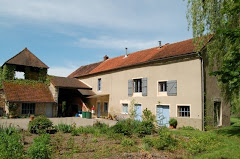Sue, my better half, cannot suppress a grin whenever I know the answer to one of the questions of the TV quiz Questions pour un Champion, based on what I remember from reading comic strips. A fact is, that, contrary to the UK, comic strips in the Netherlands, and even more so in France and Belgium, are looked at as lecture for grown-ups, and not so much as children’s books.

When I was a child, my mother was not very happy when my sister and I were continuously trying to persuade her to buy a copy of Donald Duck, a brand new weekly in those days. She was convinced that reading comic strips would damage our brain. Having said that, traditional Dutch comic strips did not have balloons like American (and French and Belgian) comic strips. Dutch comics had two or three illustrations per episode, with a big field of prose underneath the pictures describing the events. Not dissimilar to Rupert Bear in England, one could say. With the popularisation of Asterix (French) and Tintin (Belgian) the comic strip with text balloons became quite common. But that even real children’s comic strips can have some educational value, may be deduced from the following.

When my son was about 10 or 12, he sometimes made remarks of which I thought: ”Where the heck did he pick that up?”. The answer was most of the time “Oh, I read that in one of my comic strips”. In this case he was referring to a very popular Belgian comic strip “Suske and Wiske” by Willy van der Steen.
In the quiz mentioned above one of the questions was “Which painting of a shipwreck caused quite a bit of unrest under the visitors of the Salon of 1819?”. I immediately shouted the answer : “The raft of the Medusa”. That I was right, was confirmed by the quiz master: “Le radeau de la Méduse (The raft of the Medusa, 1818) is the name of a famous painting by Théodore Géricault, nowadays displayed at the Louvre in Paris”. When I had heard the questions, a newspaper article from 1967 sprang to mind, in which was explained that one of the scenes in “Asterix and the first legion” was based on the painting by Géricault. Also questions about famous comic strips, like Asterix and Tintin very often are part of the quiz. And not only the great classics are part of the questionnaire; also modern comics such as XIII and Largo Winch by Vance and van Hamme are regularly coming back as part of the questions.

But what I like most is, that I can blurt out the answer at the time a cryptic remark, only meant for the TV audience, appears on the screen even before the question has been read out. One of those hints was something like “A classic nose”, at which point I shouted out immediately “Cleopatra”. Not that I know anything about this Egyptian queen, but in “Asterix and Cleopatra”, throughout the whole book, Asterix, Obelix and Panoramix are continuously referring to Cleopatra’s nose with remarks like : “Oh, what a beautiful nose!; Have you ever seen a nose like this?”. And my answer turned out to be correct! Which proves, that it pays off to know one’s classics….
The website of La Tuilerie de Chazelle
 Our company statistic cum bookkeepster cum housewife cum cook has been cooking the books again. As she did last year, she made a stunningly sharp analysis of all those people who made our campsite a success.
Our company statistic cum bookkeepster cum housewife cum cook has been cooking the books again. As she did last year, she made a stunningly sharp analysis of all those people who made our campsite a success.



